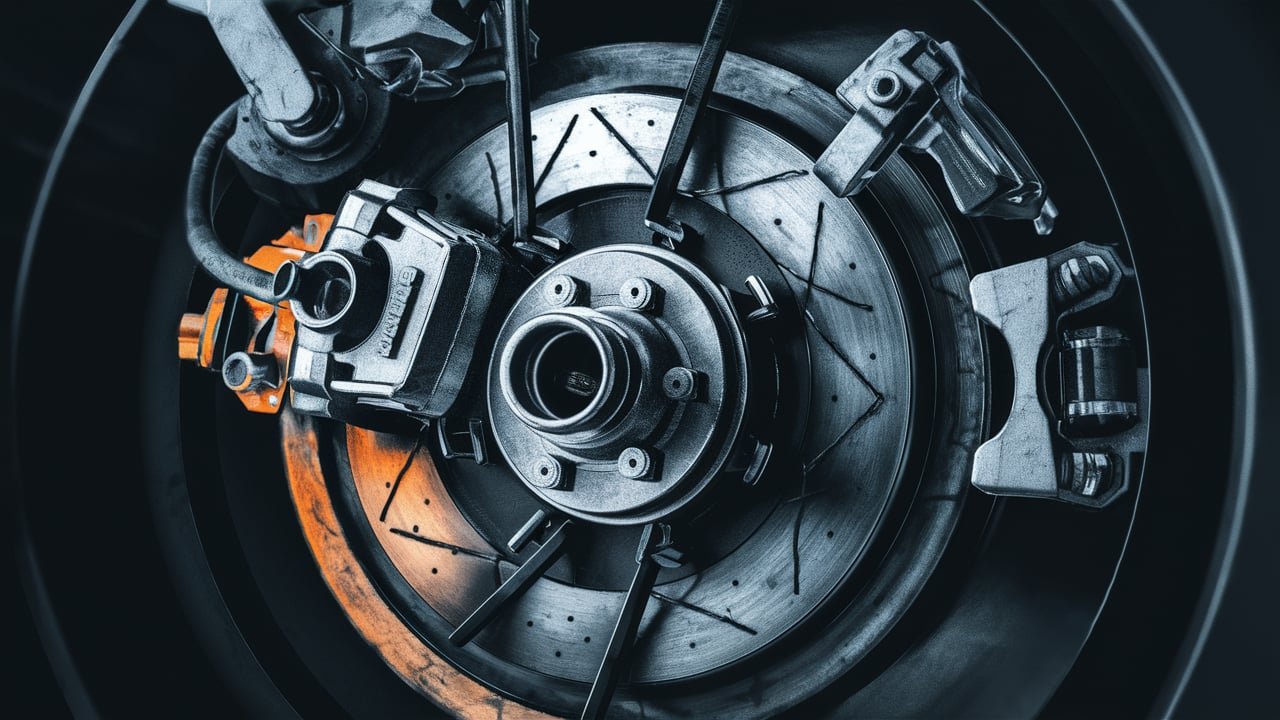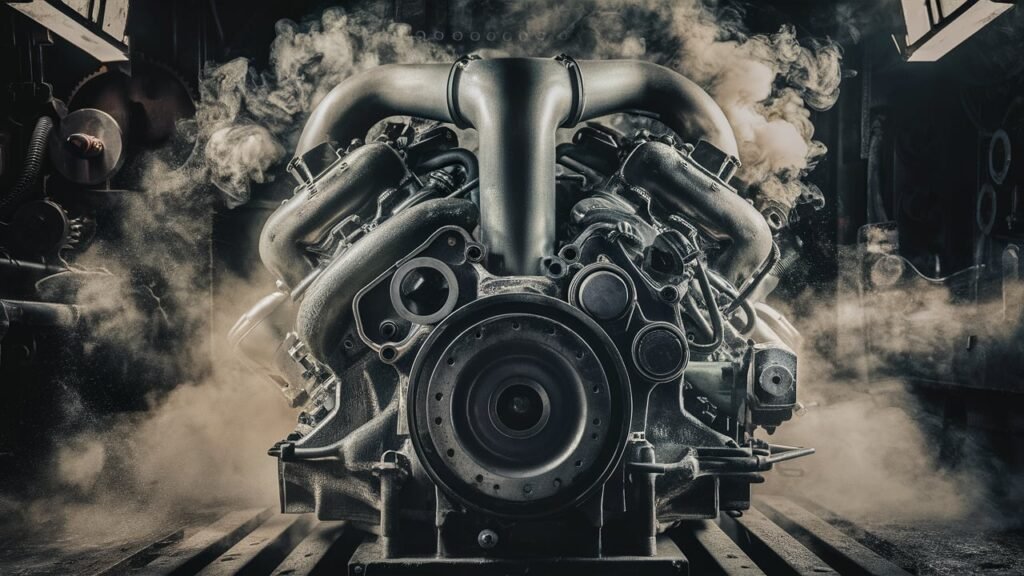
7 Key Components of a Drum Braking System
Embarking on a journey to unravel the intricate workings of a drum braking system unveils a realm of vital knowledge for automotive enthusiasts and DIY mechanics alike. Understanding the inner mechanisms behind a vehicle’s ability to decelerate or come to a precise stop is not merely about mechanical fascination; it serves as a beacon of safety, efficiency, and control on the road.
Through this exploration, we delve into the core components that orchestrate this critical function – the 7 key elements that coalesce to form the drum braking system’s symphony of motion and precision.
At the heart of every drum brake assembly lie its foundational components – from brake drums that bear the brunt of friction forces to brake shoes meticulously designed to interlock with these drums to slow down your vehicle seamlessly.
Beyond these fundamental parts exist an ensemble comprising brake springs and hardware crucial in maintaining optimal performance levels, wheel cylinders serving as hydraulic triggers for effective braking action, sturdy backing plates providing structural support for internal components, precision-driven brake adjuster mechanisms ensuring peak operation, and hydraulic brake fluid reservoirs essential for hydraulic pressure transmission within the system.
This panoramic view not only underscores their individual significance but illuminates their synergistic role in sustaining a reliable stopping force when navigating highways or winding avenues.
Main Components of a Drum Braking System.
Brake drums are integral components of a drum braking system, working hand in hand with the wheel assembly to effectively slow down or stop a vehicle through friction. When the brake pedal is pressed, the brake shoes press against the inner surface of the rotating drum, generating the necessary resistance to bring the vehicle to a halt.
Imagine brake drums as partners in a perfectly synchronized dance with tires, coordinating to ensure smooth and controlled deceleration. Regular inspection and maintenance of these drums are crucial for optimal performance and safety.
Over time, heat and friction can lead to wear and tear on brake drums, affecting their ability to provide consistent braking power. By checking for signs of cracks, grooves, or excessive heat marks on the surface of brake drums during routine maintenance, enthusiasts can address issues proactively before they compromise braking efficiency.

Brake shoes are key players in converting kinetic energy into heat energy by creating friction within the drum when pressure is applied through hydraulic force during braking. Visualize brake shoes as silent performers inside the drum; when called upon, they firmly press against it to slow down the spinning motion of wheels smoothly and efficiently.
Maintaining proper contact between brake shoes and drum ensures safe driving practices by allowing for reliable stopping power whenever needed. Consider brake shoes like precision instruments that need regular attention and adjustment to safeguard their performance longevity.
DIY mechanics who understand how these workhorse components interact will be better equipped to identify warning signs such as unusual noises or vibrations that signal potential issues with brake shoe integrity.
Wheel cylinders play an essential role in translating hydraulic pressure into mechanical motion by pushing the brake shoes against the rotating drum during braking maneuvers. Think of wheel cylinders as hydraulic conductors directing pressure where it needs to go within the system; any leaks or malfunctions within them can cause decreased braking efficiency or even complete failure.
To prevent potentially hazardous situations like loss of control due to compromised braking, automotive enthusiasts must vigilantly check wheel cylinder seals for any signs of deterioration during regular inspections.
Understanding how intricately intertwined these components are highlights the importance of maintaining each one at its optimal condition for overall system functionality—a lesson beneficial for those passionate about enhancing their knowledge in automotive technology or tackling DIY projects head-on with confidence.
Brake Shoes.
Brake shoes are pivotal components of a drum braking system, responsible for converting the kinetic energy of a moving vehicle into heat energy through friction. When the driver applies the brakes, the brake shoes press against the inside surface of the brake drum.
This action creates friction, which in turn slows down or brings the vehicle to a stop efficiently and safely. Imagine brake shoes as the silent heroes within the drum braking system, working diligently behind the scenes to ensure smooth and controlled deceleration.
The role of brake shoes in thermal energy conversion is fascinating from an engineering standpoint. As the motion energy of the rotating wheels gets transformed into heat during braking, it highlights how precision engineering plays a crucial role in automotive safety.

Understanding this process sheds light on why maintaining optimal friction levels between brake shoes and drums is essential for effective braking performance. Ensuring that brake shoes are in good condition and have adequate friction material left is vital for overall road safety.
Moreover, considering how high-performance vehicles or those towing heavy loads place more demand on their braking systems underscores the significance of quality brake shoe materials. Engineering advancements have led to innovations like ceramic-based brake shoe materials that enhance heat dissipation and improve overall braking efficiency.
By grasping these nuances of how brake shoes function within a drum braking system, both enthusiasts and professionals can appreciate the intricate workings of this critical automotive system component.
Brake Springs and Hardware.
Brake springs are often the unsung heroes within a drum braking system, playing a critical role in the system’s functionality. These springs serve as essential components that work hand-in-hand with the brake shoes.
When the brake pedal is depressed, causing the brake shoes to press against the inner surface of the drum to generate friction and stop the vehicle, it’s these springs that ensure the shoes smoothly retract once braking pressure is released.
Without properly functioning brake springs, there could be delayed disengagement of the shoes, leading to overheating issues and decreased braking efficiency.
In addition to spring action, paying careful attention to brake hardware is paramount for ensuring optimal performance of a drum braking system. Brake hardware encompasses various components like pins, clips, and retainers that hold everything together within the brakes assembly.

Neglecting maintenance on these crucial elements can result in premature wear and tear or even system failure. For instance, worn-out caliper pins can cause uneven brake pad wear due to improper alignment, leading to compromised braking performance.
To enhance longevity and safety in your drum braking system, regular inspection and maintenance of both brake springs and hardware are imperative. Proper installation practices and routine checks for signs of wear or damage ensure that these components operate seamlessly when engaged.
By understanding how these smaller but mighty parts contribute to overall brake function, DIY mechanics can take proactive measures in preventing potential issues down the road. Remember, it’s often these seemingly minor components that can make a significant difference in your vehicle’s stopping power and overall safety on the road.
Wheel Cylinders.
Wheel cylinders are pivotal components within a drum braking system, serving as hydraulic devices that play a crucial role in the braking process. When pressure is applied to the brake pedal, the hydraulic fluid exerts force on the wheel cylinders, causing them to push the brake shoes against the inner surface of the brake drum.
This action creates friction, ultimately leading to the vehicle slowing down or coming to a complete stop. Understanding how wheel cylinders function is essential as any leaks or malfunctions in these components can result in diminished braking power and pose significant safety hazards for both the driver and other road users.
To grasp the importance of properly functioning wheel cylinders, consider a scenario where a vehicle’s wheel cylinder develops a leak. This leakage can lead to a loss of hydraulic pressure within the braking system, reducing the force applied to the brake shoes and compromising overall braking performance.

In such instances, drivers may experience delayed response times when attempting to stop their vehicles, increasing the risk of accidents or collisions. Regular inspection of wheel cylinders is hence paramount to detect any signs of wear or damage promptly and ensure optimal braking efficiency and safety on the road.
Furthermore, it is vital for DIY mechanics and automotive enthusiasts to comprehend that malfunctioning wheel cylinders can have cascading effects on other components within the drum braking system.
For example, if a wheel cylinder fails to apply sufficient pressure on the brake shoes when needed, excess wear may occur on both the shoes and drums due to inadequate friction distribution. Such scenarios not only impact immediate braking performance but can also lead to more extensive repairs and increased maintenance costs over time.
Hence, prioritizing proper maintenance practices and timely replacements of faulty wheel cylinders can prevent potential safety risks associated with compromised braking systems in vehicles.
Backing Plate.
Backing plates are robust metal components in a drum braking system that serve as the foundation for crucial internal parts. These sturdy plates are directly responsible for supporting and aligning various elements like the brake shoes, wheel cylinders, and adjuster mechanism.
Additionally, backing plates act as protective shields, guarding these essential components from external elements that could cause damage or interfere with their functionality. Imagine the backing plate as the backbone of a drum braking system, ensuring everything stays securely in place and functions effectively during each braking event.
In practical terms, backing plates play a vital role in maintaining the integrity and alignment of the brake components within the drum assembly. By providing a stable mounting surface for other elements such as the wheel cylinders or springs, they contribute significantly to the overall reliability and safety of the braking system.

Think of backing plates as the silent guardians working behind the scenes to uphold structural integrity and ensure that each component operates harmoniously within the confined space of a brake drum. Without this essential support structure, components may become misaligned or damaged, leading to compromised braking performance or even mechanical failures.
Moreover, backing plates showcase how meticulous design and engineering principles are at work within a drum braking system. Their function goes beyond mere physical support; they also aid in distributing forces evenly when brakes are applied, reducing stress on individual components and promoting longevity.
Every time you press on your brake pedal, remember that it is not just one part but an intricate network of components—like backing plates—working together seamlessly to ensure your vehicle stops safely and reliably.
Understanding and appreciating these often-overlooked details can deepen your knowledge of automotive systems’ complexities while highlighting the significance of every component’s role within a larger framework of functionality and safety.
Brake Adjuster Mechanism.
Within the intricate system of drum brakes, the brake adjuster mechanism plays a crucial role in ensuring optimal braking performance. This mechanism is designed to maintain the appropriate gap between the brake shoes and the inner surface of the drum.
By adjusting this gap, it guarantees that when the brakes are applied, there is efficient contact between the brake shoes and the drum. Imagine a well-choreographed dance where precision is key; similarly, the adjuster mechanism orchestrates this harmonious interaction for seamless braking.
Periodic adjustment of the brake adjuster mechanism is paramount to uphold this delicate balance within the drum braking system. Over time and through regular use, wear and tear can lead to changes in this gap.
By periodically adjusting this mechanism, you are essentially fine-tuning your vehicle’s ability to stop safely and effectively. Just as an athlete requires ongoing training to maintain their peak performance, your brake adjuster mechanism needs routine adjustments to ensure it functions optimally.

Failure to maintain proper contact between the brake shoes and drums due to neglecting adjustments can compromise not only your vehicle’s efficiency but also safety on the road.
Picture driving down a steep slope with inadequate braking power—it’s a scenario no driver wants to find themselves in due to overlooking such a seemingly small component like the adjuster mechanism.
Therefore, understanding and acting upon the importance of periodic adjustments demonstrate a commitment to safe driving practices and responsible vehicle maintenance within one’s automotive repertoire.
Hydraulic Brake Fluid Reservoir.
The hydraulic brake fluid reservoir serves as a critical component within the drum braking system, playing a pivotal role in storing brake fluid necessary to create hydraulic pressure that activates the wheel cylinders.
This stored fluid is fundamental for transferring force from the brake pedal to the wheel cylinders, ultimately facilitating the conversion of kinetic energy into heat through friction on the brake shoes and drums.
It is essential for automotive enthusiasts and DIY mechanics to recognize the significance of maintaining appropriate levels of brake fluid within this reservoir, as inadequate levels can lead to decreased braking performance or even system failure.
Regularly monitoring and replenishing the hydraulic brake fluid reservoir with compatible fluids is paramount in ensuring optimal functionality and safety of a vehicle’s braking system. For instance, neglecting to check and maintain proper fluid levels could result in air entering the system, leading to spongy brakes that compromise stopping power.
Additionally, using incorrect or incompatible fluids may cause seal damage within the system, potentially resulting in leaks or reduced braking efficiency over time. By understanding how essential this reservoir is to overall brake performance, individuals can proactively prevent issues by adhering to manufacturer specifications regarding recommended types of brake fluid.

In practical terms, envision a scenario where a car owner notices a slight decrease in braking responsiveness. Upon inspection, they discover that the hydraulic brake fluid level in the reservoir is below the recommended minimum.
Recognizing this issue promptly, they top up the reservoir with compatible brake fluid as per manufacturer guidelines. As a result, they restore optimal hydraulic pressure within the system, addressing the diminished braking performance before it escalates into more significant safety concerns during driving conditions.
Ultimately, this simple yet crucial maintenance task highlights how attentiveness to hydraulic fluid levels can preserve both operational efficiency and safety within a drum braking system.
Conclusion.
In conclusion, a deep understanding of the 7 key components of a drum braking system is crucial for automotive enthusiasts, DIY mechanics, students studying automotive technology, and car owners.
By comprehending the intricate interplay between brake drums, brake shoes, springs and hardware, wheel cylinders, backing plates, adjuster mechanisms, and hydraulic brake fluid reservoirs, individuals can better appreciate the complexities that underpin safe and reliable braking performance in vehicles.
Regular inspections and maintenance routines are highly encouraged to uphold the optimal functioning of these key components within a drum braking system. Whether it’s checking brake wear indicators or monitoring hydraulic fluid levels, proactive engagement with maintenance tasks ensures that any potential issues are identified early on.
Remember that seeking professional assistance when faced with uncertain problems or when in doubt about complex repairs will contribute to maintaining the efficiency and safety of your vehicle’s braking system in the long run. Together, let’s keep our journeys smooth and secure by taking care of every intricate part that enables us to stop safely on the road.




